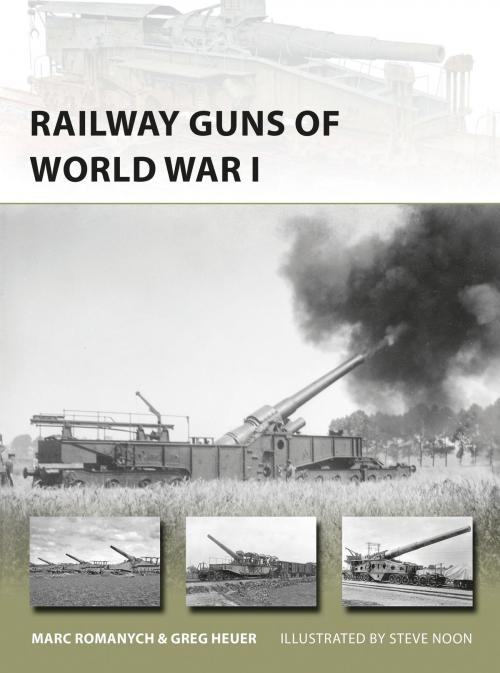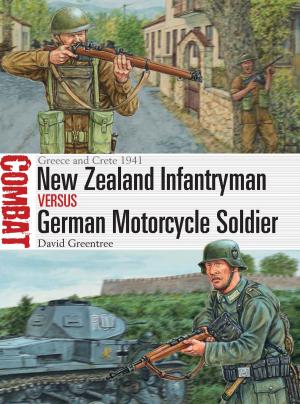| Author: | Marc Romanych, Greg Heuer | ISBN: | 9781472816412 |
| Publisher: | Bloomsbury Publishing | Publication: | August 24, 2017 |
| Imprint: | Osprey Publishing | Language: | English |
| Author: | Marc Romanych, Greg Heuer |
| ISBN: | 9781472816412 |
| Publisher: | Bloomsbury Publishing |
| Publication: | August 24, 2017 |
| Imprint: | Osprey Publishing |
| Language: | English |
World War I was the Golden Age of the railway gun. Even though at the start of the conflict none of the armies possessed any railway artillery pieces and the very idea was comparatively new, more railway guns were used during this war than in any other conflict. Designed to break the stalemate of trench warfare, the first railway guns were simple, improvised designs made by mounting surplus coastal defence, fortress, and naval guns onto existing commercial railway carriages. As the war dragged on, railway artillery development shifted to longer range guns that could shell targets deep behind enemy lines. This change of role brought much larger and more sophisticated guns often manufactured by mounting long-barrel naval guns to specially-designed railway carriages.
This book details the design and development of railway guns during World War I from the very first basic designs to massive purpose built "monster" railway guns. Accompanying the text are many rare, never-before-published, photographs and colour illustrations depicting how these weapons were used during World War I.
World War I was the Golden Age of the railway gun. Even though at the start of the conflict none of the armies possessed any railway artillery pieces and the very idea was comparatively new, more railway guns were used during this war than in any other conflict. Designed to break the stalemate of trench warfare, the first railway guns were simple, improvised designs made by mounting surplus coastal defence, fortress, and naval guns onto existing commercial railway carriages. As the war dragged on, railway artillery development shifted to longer range guns that could shell targets deep behind enemy lines. This change of role brought much larger and more sophisticated guns often manufactured by mounting long-barrel naval guns to specially-designed railway carriages.
This book details the design and development of railway guns during World War I from the very first basic designs to massive purpose built "monster" railway guns. Accompanying the text are many rare, never-before-published, photographs and colour illustrations depicting how these weapons were used during World War I.















